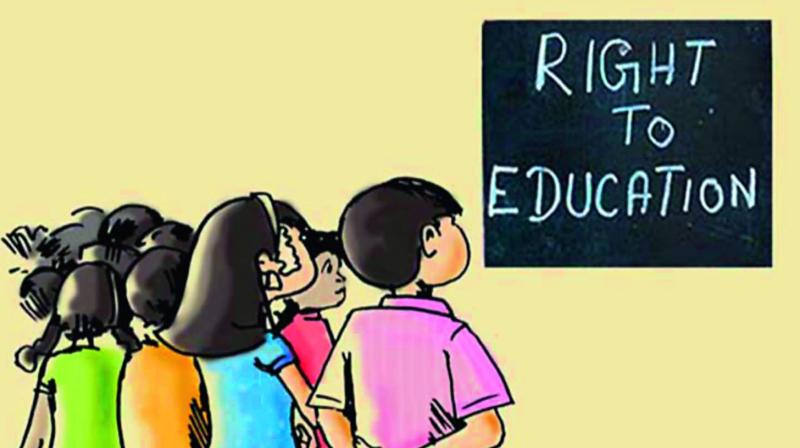Education that empowers the next generation is the primary concern for every nation. However, India faces several educational challenges.
In the Unni Krishnan case, a five judge Constitutional Bench ruled that Right to Education is a fundamental right for children upto the age of fourteen years. It is not a discretionary right and is enforceable in the same manner as other fundamental rights are.
Article 21-A
Education is a fundamental right and follows from the right to life. The Constitutional Bench in Unni Krishnan case held that the statutory right to free and compulsory education up to the age of 14 is guaranteed by Article 21.
Moreover, the Court also pointed out that the education falls under the Concurrent List of subject matters on which both Centre and State have the jurisdiction. So, imposing a capitation fee would be a violation of this fundamental right. This would also violate international treaties like ICESCR, CEDAW and CERD Convention.
Article 21-B
The Constitution of India and the 86th amendment of the Constitution declares education as one of the fundamental rights. However, this article does not describe the modalities of implementing this right.
Although many children are now enrolled in school, there is still a lot of work to be done. For example, Jayshree Bajoria reports that only about half of the children from disadvantaged communities will stay in school all the way through their primary education. This is partly because of problems with schools that impose donor fees or interview students.
Article 21-C
The 86th amendment in Indian Constitution brought in the right to education as one of the fundamental rights. The Right to Education Act 2009 describes modalities of this fundamental right.
In Unni Krishnan vs State of Andhra Pradesh, SC established that the right to education is a fundamental right only for children up to the age of fourteen years. It also fixed that the right to education is subordinate to the economic means of the state and its development. It also prescribed minimum norms for elementary schools, advocated against donation fees and interviews for admission of kids.
Article 21-D
Right to education is one of the most powerful tools for nation-building. The enactment of the RTE Act has made India one of the 135 countries worldwide that guarantees free education for 9 years. It also sets minimum norms for elementary schools, prohibits unrecognized schools from charging donation fees and interviewing children/parents for admission, and prohibits discrimination against children of disadvantaged groups.
The right to live with dignity embodied in article 21 requires protection from exploitation. The most important means of this protection is through education.
Article 21-E
The Right to Education is a fundamental duty of every parent and guardian for their children from six to fourteen years. It is a very important clause in the Indian Constitution.
The Constitution of India and the Right to Education Act made education a fundamental right for all children up to the age of 14. It also stipulates that private schools must keep 25% seats reserved for poor children.
The Supreme Court in several cases has liberalised the interpretation of Article 21. This has made it even more emancipatory.
Article 21-F
India has made progress towards universalising elementary education since the enactment of the Right to Education Act 2009. However, millions of children remain out of school. India still struggles with discrimination in schools, despite the fact that it is illegal.
The Right to Education flows directly from the Right to Life. This means that any procedure depriving a person of his rights to life and liberty must be’reasonable’. Unjustifiable delay in investigation arouses suspicion that the procedure is not reasonable. This is a violation of the right to life and liberty.
Article 21-G
The RTE Act enshrines the right of every child to free and compulsory education upto the age of 14 years. It also lays down norms and standards regarding inter alia Pupil Teacher Ratios, infrastructure, buildings and teacher-working days.
In the Maneka Gandhi case, the Supreme Court interpreted Article 21 to have a wide scope and added that the deprivation of rights under this article must be done according to procedure established by law. This means that a person must have the right to a fair trial.
Article 21-H
Right to Education is one of the most important rights guaranteed by the Indian constitution. It was made a fundamental right in India by the 86th amendment to the constitution.
The RTE Act lays down the modalities of this fundamental right to education. It stipulates a minimum standard of education, a fixed pupil-teacher ratio, and prohibitions on capitation fees and unrecognised schools. It also makes it mandatory to provide hostels for boarding students and prevents corporal punishment. It also prohibits discrimination on the basis of gender, class and caste.
Article 21-I
Article 21 of the Indian Constitution is a very important article that ensures free education for children between the age of 6 and 14. This was only achieved after more than six decades of India’s independence.
The Supreme Court of India argued that the Right to Life in Article 21 also implies other rights which are necessary for one’s development like the right to education. This was observed in the Mohini Jain case. The Court partially overruled an earlier judgement. It also clarified that the Right to Education is not an absolute right but it depends on the state’s economic capability and development.
Article 21-J
Unlike recommendations, declarations and charters, treaties confer a legal obligation on the State. For example, the RTE Act stipulates that all children have a right to free and compulsory education up to the age of fourteen.
Education is a fundamental human right because it leads to better analytical skills and more confidence in making the right decisions. It also helps reduce crime and makes society a better place to live. The Supreme Court recognized this right in the case of Unni Krishnan v. State of Andhra Pradesh.

